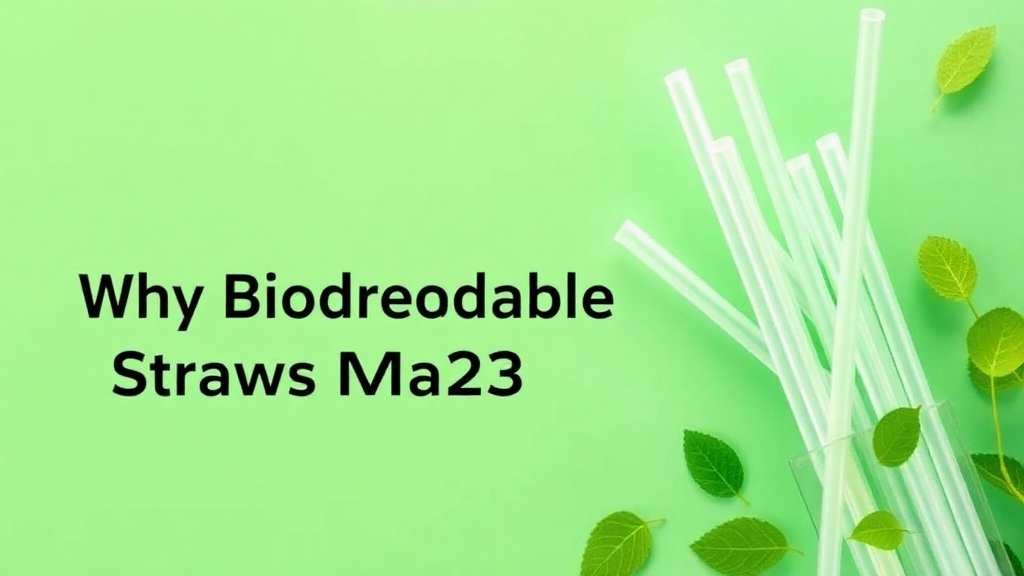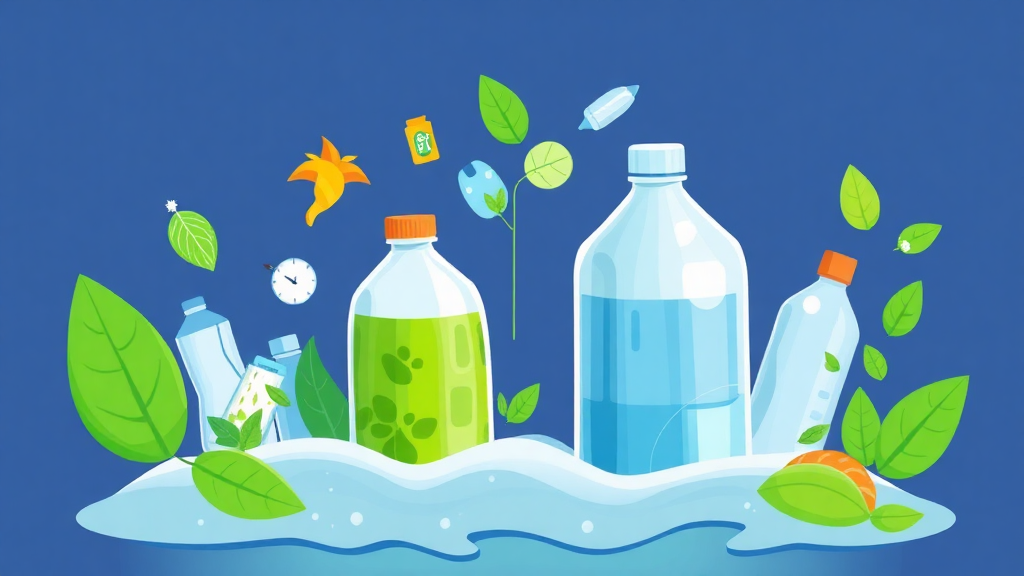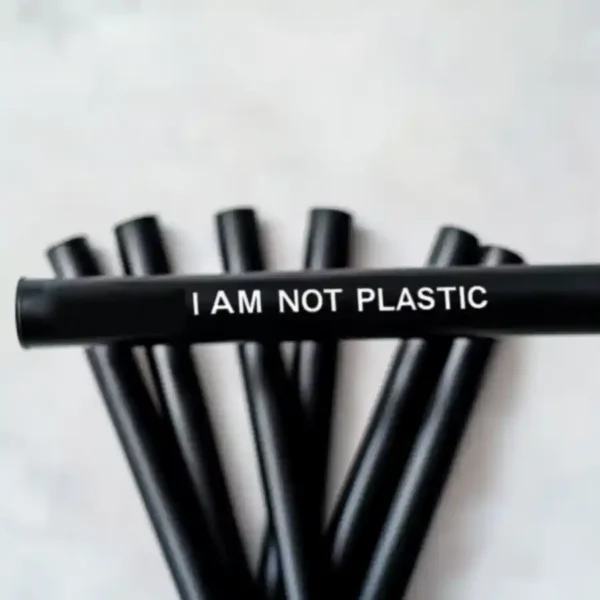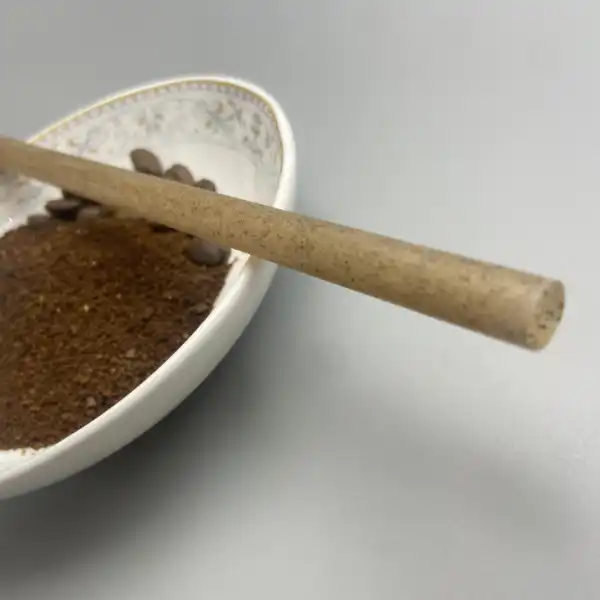
Why Biodegradable Straws Are a Game-Changer in 2025
Picture a bustling café facing $10,000 in fines for clinging to plastic straws—or a competitor thriving by slashing waste with biodegradable alternatives. In 2025, the choice is clear. I’m Max Jiang, Sustainability Expert at NatureBioEco, and I’ve seen businesses transform with eco-friendly straws. This guide dives into the science behind materials like sugarcane, PLA, and PHA, revealing how they cut costs, boost brands, and align with global trends.
The 2025 Sustainability Trends Report notes 78% of consumers prefer eco-conscious brands. With plastic bans tightening, biodegradable straws aren’t just smart—they’re essential.
The Environmental Stakes: Plastic vs. Biodegradable
Plastic straws linger for over 500 years, shedding microplastics into oceans and soil. Biodegradable options flip the script:
- Sugarcane Straws: Degrade in 60-180 days in landfills.
- PLA: Breaks down in 8-12 months industrially.
- PHA: Marine-degradable in 15-20 months, no microplastics.
A 2025 Global Bioplastics Council study shows restaurants switching to compostable straws reduce landfill waste by 30%. That’s science businesses can’t ignore.

Unpacking the Science of Biodegradable Materials
Sugarcane Straws: From Farm to Table
Made from bagasse—a sugarcane byproduct—these straws are a sustainability win. They resist sogginess for over 4 hours, outlasting paper’s 45-minute limit, and compost in 90 days industrially. NatureBioEco’s sugarcane straws, for instance, use a water-resistant coating to handle carbonated drinks.
PLA and PHA: Bioplastics Breakdown
PLA, derived from cornstarch, needs industrial composting but costs less at $25 per 1,000 units. PHA, a marine-degradable marvel, withstands 95°C—ideal for hot drinks—and fully dissolves in seawater within 15 months. “PHA’s versatility is unmatched,” says Dr. Lisa Chen of the Bioplastics Council.
Learn more about our biodegradable straws.
Case Studies: Real-World Impact
Green Haven Bar: 20% Waste Cut
In 2024, Green Haven Bar swapped plastic for sugarcane straws. Results? A 20% plastic reduction in six months and $1,200 saved yearly on waste. “Eco-branding draws in millennials,” says owner Maria Torres.
Sea Breeze Café: PHA Success
Sea Breeze Café adopted PHA straws for its coastal clientele. Waste dropped 25%, and hot drink complaints vanished. “Customers notice the difference,” notes manager Tom Lee.
Material Comparison: Cost, Heat, and More
| Material | Cost per 1k | Heat Limit | Decomposition |
|---|---|---|---|
| Sugarcane | $18 | 80°C | 60-180 days |
| PLA | $25 | 50°C | 8-12 months |
| PHA | $45 | 95°C | 15-20 months |
| Bamboo | $30 | 60°C | Reusable |
Data: 2025 Global Bioplastics Council. Sugarcane leads for cold drinks, PHA for heat.
Business Benefits: Cost and Compliance
Bulk Purchasing Wins
Sugarcane straws drop to $0.018 per unit for 50,000+ orders. Avoid fines—CA and NY penalize plastic use up to $2,000 annually.
Supply Chain Strength
USDA-certified bulk sugarcane straws suppliers like NatureBioEco ensure stock reliability. “Consistency is key,” says supply expert John Doe.

About the Author
Max Jiang, with 10+ years at NatureBioEco, drives sustainable innovation for B2B clients.
Frequently Asked Questions
Q: How fast do sugarcane straws decompose compared to PLA and PHA?
A: Sugarcane straws break down in 60-180 days in landfills, while PLA takes 8-12 months industrially and PHA 15-20 months in marine environments.
Q: What certifications ensure biodegradable straw quality?
A: Look for ASTM D6400 for composting and marine-degradability certifications for PHA, ensuring eco-friendly breakdown.
Q: Are sugarcane straws cost-effective for restaurants?
A: Yes—Green Haven Bar saved $1,200 yearly on waste, cutting plastic use by 20% with bulk sugarcane straws.
Q: Can biodegradable straws handle hot drinks?
A: PHA straws resist 95°C, perfect for coffee, lasting 4+ hours—unlike paper’s quick collapse.
Q: Do marine-degradable straws leave microplastics?
A: No—PHA fully dissolves in seawater within 15 months, leaving no microplastics, per 2025 studies.
Q: How do biodegradable straws boost brand perception?
A: 78% of millennials favor brands using sugarcane straws, enhancing eco-conscious appeal, says 2025 Trends Report.
Q: Where can businesses source bulk biodegradable straws?
A: NatureBioEco offers FSC-certified bulk sugarcane straws at $0.018/unit for 50,000+ orders.
Q: Are there allergen risks with biodegradable straws?
A: No—sugarcane and PLA are gluten-free, and PHA is nut-free, safe for all customers.







